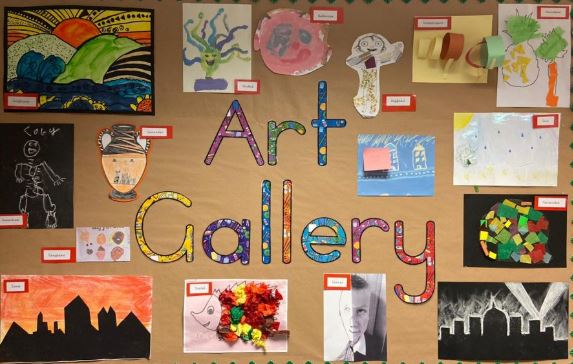The Impact of Continued Provision on Children’s Learning in Art and Design (2014)
Learning in Art and Design aims to provide a rich, motivating, challenging environment that responds to the individuality of each child. In such an environment complex thinking skills are applied and art then provides a vehicle for rich, in depth learning. In light of this, the purpose of this study was to explore the application and research of child centred, exploratory learning.
Having taught in the EYFS for three years the transition from EYFS to Key Stage one (KS1) seemed to lack flow and continuity. The children were leaving a holistic, child centred environment and moving on to a more formal timetabled education. There have been many suggestions towards breaching the gap between EYFS and KS1.
After the Rose Review (2006) it was suggested that Rose’s description of high-quality, play-based learning could well find a place in KS1. In response to this the design of this research explored the application of an element of an approach that has come from the Reggio Emilia philosophy, continuous provision. There were three main objectives to the study.
To determine the features of continued provision in the primary classroom, discovering what a continued provision may look like and how it could be successfully implemented. To explore the role of continued provision in children’s learning in art and design and to ascertain if the continued provision can provide significant challenge to children engaged in art and design.
The research took the form of a case study, adopting the mosaic approach. The data involved the collection of images of children’s work as well as interviews with them which were then analysed and reviewed by the staff of the school. The data provided four main characteristics of children’s work within the continuous provision but also demonstrated the importance of the careful application of the provision.
The research concluded that careful planning and consideration were essential to the positive impact of the continued provision. It further provided a reflective tool for my own personal practise that provides points that other practitioners may wish to consider.
- 20,000 words – 66 pages in length
- Excellent use of literature
- Good analysis of subject area
- Well written throughout
- Includes observations
- Ideal for education and childhood studies students
1 – Introduction
The impact of continued provision on children’s learning in Art and Design
2 – Literature Review
Play in Education
Reggio Emilia Approach
Reggio Emilia and the National Curriculum: Contrasts and Connections
Continued Provision in Key Stage One
Conclusion
3 – Research Methodology
Methodology
Case Study Approach
Mosaic Approach
Research Environment and Participants
Data Collection and Analysis
Ethical Considerations
4 – Research Data
Continued Provision: The Set Up
Initial Findings
The Role of the Continued Provision
Provision of Significant Challenge
Reflective Diary
Conclusion
5 – Discussion
Continued Provision in Key Stage 1: What it Looks Like
The Role of Learning in the Continued Provision
The Provision of Challenge
Continued Provision in Practice
Conclusion
6 – Dissertation Conclusion
Bibliography
Appendix
Observation Diary
Leuven Scale
Parental Consent Form
Staff Permission Form
Ethics Form
Reflective Journal
Samples of Observation Diaries
School Form
Planning Scheme

